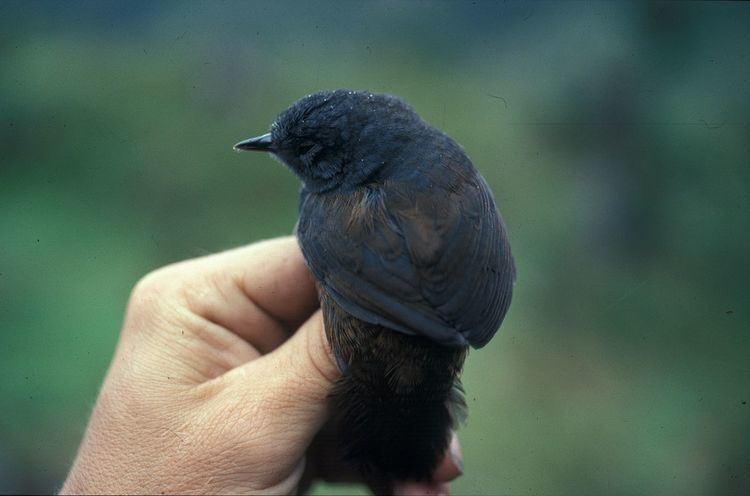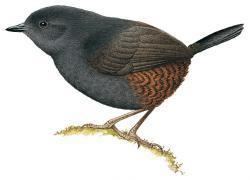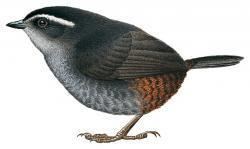Scientific name Scytalopus Rank Genus | Family Rhinocryptidae Phylum Chordata Order Passerine | |
Lower classifications Mouse‑coloured tapaculo, Magellanic tapaculo, Brasília tapaculo, Dusky tapaculo, Pale‑bellied tapaculo | ||
Tatama tapaculo scytalopus alvarezlopezi parque natural tatama
Scytalopus is a genus of small passerine birds belonging to the tapaculo group. They are found in South and Central America from Tierra del Fuego to Costa Rica, but are absent from the Amazon Basin. They inhabit dense vegetation at or near ground-level and are mainly found in mountainous regions, particularly the Andes. They can be very difficult to see as they run through the undergrowth in a mouse-like fashion.
Contents
- Tatama tapaculo scytalopus alvarezlopezi parque natural tatama
- Blackish tapaculo scytalopus latrans birding bogota colombia wildlife expeditions
- Description
- Behavior
- Taxonomy
- Conservation
- Species list
- References
Blackish tapaculo scytalopus latrans birding bogota colombia wildlife expeditions
Description

They are plump with short tails that often are held cocked. Depending on species, the total length is 10–14 cm (4-5½ in). Their plumage is blackish or grey. Several species have brown bellies, rumps or flanks; often with some barring. A few have white crowns or eyebrows. Juveniles of most species are browner and have barred flanks. Many species are essentially impossible to separate by their plumage, but songs and calls are often distinctive and important for species identification.
Behavior

Their diet consists mainly of insects. Little is known about the breeding habits of most species but the eggs are usually white and the nest is usually ball-shaped and made of plant material such as root-fibres and mosses. It is built in a cavity in sites such as earth banks or among the roots or bark of trees.
Taxonomy

The species-limits within this genus is among the most complex matters in Neotropical ornithology. They are highly cryptic, and identification using visual features often is impossible. Vocal and biochemical data is typically needed to clarify the taxonomic status of the various populations. Several new species have been described in recent years (e.g. S. stilesi and S. rodriguezi from Colombia). The taxonomic status of many of the Andean species was resolved by Krabbe & Schulenberg (1997) who split a number of species and described three new ones. The confusing situation is perhaps best illustrated by the fact that only 10 species were recognized in this genus in 1970 (Krabbe & Schulenberg, 2003), while the figure now is more than four times as high. Additionally, still undescribed species are known to exist (e.g. the "Apurimac tapaculo" and "Millpo tapaculo"; both from Peru), while some species as currently defined actually may include several species (e.g. the southern population of the large-footed tapaculo may represent an undescribed species). Donegan & Avendano recently reviewed the Colombian and Venezuelan species, formally describing one new subspecies and providing details of a further three undescribed species or subspecies to be described in future publications.

The Brazilian taxa are similarly complex with several recently described species and considerable confusion surrounding the use of the scientific name Scytalopus speluncae.
Conservation

Some species have highly localized distributions, and being poor fliers, they easily become isolated in small populations. BirdLife International currently (2007) consider one species vulnerable (Scytalopus panamensis) and three species endangered (S. iraiensis, S. rodriguezi and S. robbinsi).
Species list
Until recently, the white-breasted and Bahia tapaculos were placed in this genus, but these two species are now known to be closer to the bristlefronts (genus Merulaxis) and have therefore been moved to Eleoscytalopus.
